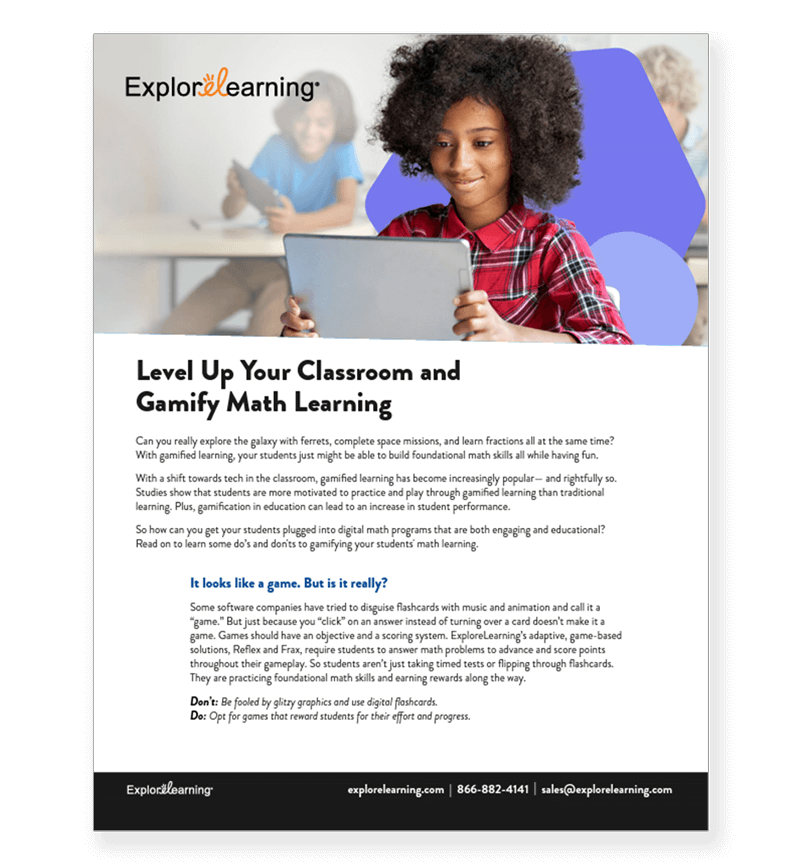
Can you really explore the galaxy with ferrets, complete space missions, and learn fractions all at the same time? With gamified learning, your students just might be able to build foundational math skills all while having fun.
With a shift towards tech in the classroom, gamified learning has become increasingly popular— and rightfully so. Studies show that students are more motivated to practice and play through gamified learning than traditional learning. Plus, gamification in education can lead to an increase in student performance.
So how can you get your students plugged into digital math programs that are both engaging and educational? Read on to learn some do’s and don'ts to gamifying your students' math learning.
It looks like a game. But is it really?
Some software companies have tried to disguise flashcards with music and animation and call it a “game.” But just because you “click” on an answer instead of turning over a card doesn’t make it a game. Games should have an objective and a scoring system. ExploreLearning’s adaptive, game-based solutions, Reflex and Frax, require students to answer math problems to advance and score points throughout their gameplay. So students aren’t just taking timed tests or flipping through flashcards. They are practicing foundational math skills and earning rewards along the way.
Don’t: Be fooled by glitzy graphics and use digital flashcards.
Do: Opt for games that reward students for their effort and progress.
Sure, they’re fun, but are students actually learning anything?
Students won’t put down their controllers for video games like Minecraft, Skylanders, and Pokemon. One could argue they help students develop an understanding of spatial relationships, keyboarding skills, and maybe faster reflexes. Although engaging, these games aren’t designed to be educational. They don’t have any specific or measurable learning outcomes. Simulations like ExploreLearning Gizmos are “game-like” but also have clear outcomes and goals for students, and teach required skills. They align to state standards, so teachers are clear about how they fit into the curriculum. All the while, the simulations are fun for students, letting them actively take charge of their learning, as opposed to reading a textbook or watching a video. Students get to think and act like scientists and mathematicians—and so they are.
Don’t: Choose a game just because it’s fun.
Do: Pick programs that support state standards and student learning.
Does the game do what it promises?
Many educational games advertise themselves as covering countless math topics. So dive in and take the time to test and try out the programs ahead of time. That way you’ll be able to understand the game’s objectives and vet if the game teaches what you need students to learn. Also make sure to read testimonials and white papers to see if the games have been proven effective. ExploreLearning Reflex focuses on math fact fluency and has been implemented in thousands of schools and districts across the country. Research and case studies have shown that students using Reflex are scoring higher and growing faster than their peers. And ExploreLearning Frax uses the latest research to create a better way to learn fractions by focusing on fractions as numbers first.
Don’t: Implement a game in your class without vetting it.
Do: Try a game out to see if it teaches (and reinforces) what you need your students to learn in a fun and effective way.
Gamified learning can help you engage students and meet state standards. Just be sure that any product or program you choose does what it promises, and tracks your students’ progress to ensure they’re learning—and retaining—what they need to know.
Sources: Finances Online
Sign up to get the latest updates from ExploreLearning via occasional email.
